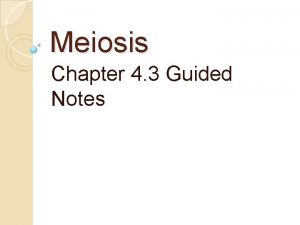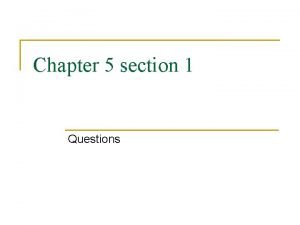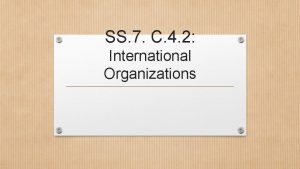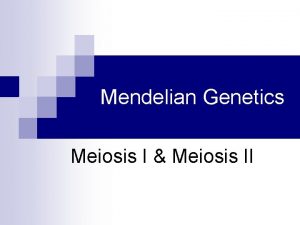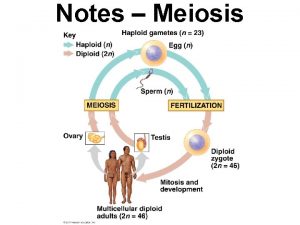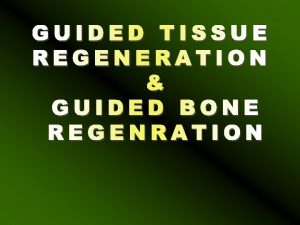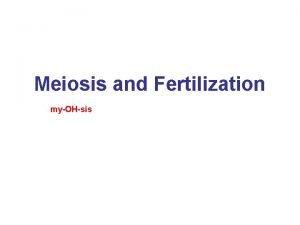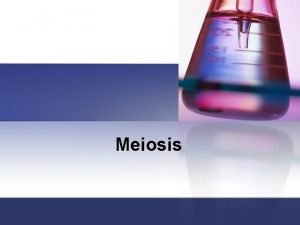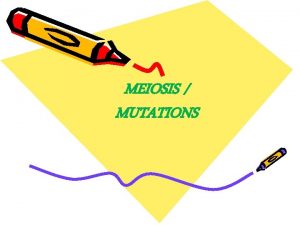Meiosis Chapter 4 3 Guided Notes Lets review












- Slides: 12

Meiosis Chapter 4. 3 Guided Notes

Let’s review…. �Mitosis produces two genetically identical daughter cells. �In sexual reproduction, offspring inherit traits from both parents (the mother and the father). �Genetic traits are inherited in predictable patterns.

Meiosis is necessary for sexual reproduction. �Most human cells (body cells) contain 46 chromosomes (23 pair). �Any cell that contains the full number of chromosomes (two sets) for a species is a 2 n cell, or diploid cell.

Gametes �Gametes are cells that contain half the usual number of chromosomes- one chromosome from each pair. �Gametes are 1 n cells, and also called haploid cells. Human gametes contain 23 unpaired chromosomes. �Gametes are found only in the reproductive organs. ◦ An egg is the gamete that forms in a female.

Fertilization �During sexual reproduction, two gametes combine to become a 2 n cell that can grow into a new offspring. �Fertilization is the process that occurs when a sperm and egg combine to form one new cell. �The egg (23 chromosomes) and the sperm (23 chromosomes) combine to form a new 2 n cell with 46 chromosomes.

Mitosis vs. Meiosis �Body cells divide by mitosis. �Each daughter cell formed by mitosis is a standard diploid (2 n) cell. �But to produce gametes (which are haploid), a different kind of division is necessary- this is called meiosis. �Meiosis produces haploid (1 n) cells. During meiosis, a single cell goes through two cell divisions- meiosis I and meiosis II. �Meiosis only occurs in the reproductive tissues of an organism.

Cells divide twice during meiosis. �Before meiosis begins, chromosomes of the parent cell are copied, so there are now two copies of each chromosome pairtwice as many as usual. �So, to end up with cells that have half the usual number of chromosomes, there must be two divisions.

Meiosis I �Remember, two chromosomes in a pair are called homologs. �During meiosis I, the homologs separate and the starting cell divides into two cells. �One cell contains the two copies of one homolog of each pair, while the other cell contains the two copies of the other homolog of each pair. Meiosis II �During Meiosis II, each of the two cells is divided, producing four haploid cells. �Each haploid cell has one unpaired set of chromosomes.

Meiosis 1 and II: Male vs Female

Functions of meiosis �During meiosis, one cell in an organism’s reproductive system divides twice to form four 1 n cells. �In males, these gametes become sperm. �In females, only one of these four new cells becomes an egg. ◦ The rest of the cells dissolve back into the organism (or are never produced at all).

Differences of meiosis and mitosis. �Meiosis only occurs in reproductive tissues! �Only cells that are to become gametes go through meiosis. All other cells divide through mitosis. �A cell that divide by meiosis goes through two cell divisions, but the chromosomes are not copied before the second division. In mitosis, the chromosomes are always copied before division. �Daughter cells produced by meiosis, which are haploid (1 n), only contain half the genetic material of the parent cell. �Daughter cells produced during mitosis, which are diploid (2 n), contain exactly the

Differences of meiosis and mitosis.
 Functions of meiosis
Functions of meiosis Crossing over occurs during:
Crossing over occurs during: Chapter 10 meiosis 1 and meiosis 2
Chapter 10 meiosis 1 and meiosis 2 Meiosis introduction activity
Meiosis introduction activity Chapter 5 section 1 guided reading
Chapter 5 section 1 guided reading Let's review cartoon
Let's review cartoon Two negative integers
Two negative integers Lets review
Lets review Meiosis vs mitosis anaphase
Meiosis vs mitosis anaphase Meisis 1 and 2
Meisis 1 and 2 Differentiate between chromosome and chromatid
Differentiate between chromosome and chromatid Prophase 2 of meiosis
Prophase 2 of meiosis Guided notes international organizations
Guided notes international organizations
